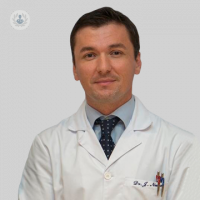The modern practice of breath
Written by:A scientific and halitosis criterion approach reduces the risk of ineffective treatments and minimizes collateral damage associated therapies applied to. According to the most current patterns, the clinical approach to the patient with halitosis should follow three phases: diagnosis, treatment and control.

Phase 1: Diagnosis
Before a treatment, it is essential to obtain the diagnosis of the cause of the ailment. The first phase consists of a simple consultation with all patient data, current status and medical history are collected. Among them they are analyzed harder related halitosis predisposing factors and triggers it.
The following mandatory tests should include the following tests are performed:
- A computerized study of breath by gas chromatography
- Examination of saliva and salivary gland function
- Microbiological and enzymatic tests from samples of bacterial plaque and saliva
Gc is considered the most reliable method of diagnosis. However, it is possible further analysis and tests in the event of a specific clinical suspicion.
The collection and analysis of data define the therapeutic plan. Obtaining diagnosis depends not only on analysis of medical data collected, also from the results of clinical examination and specific diagnostic tests for halitosis.
In the diagnostic process is crucial assessment of the case by a professional Dentistry experienced in treating halitosis.
Phase 2: Treatment
After analyzing the results, medical professionals determine the appropriate treatment for each patient. This second phase is characterized by tracking all procedures, whose ultimate aim is the elimination of halitosis and its psychosocial effects.
About 83% of cases are solved with medication topically or systemically, acting especially on the inside of the oral cavity, the respiratory tract and the gastrointestinal tract. The remaining cases (17%) may include the removal of infectious foci, surgeries, psychological therapy, among others. In most cases, a clear improvement of halitosis in only three or four days is observed after starting treatment.
Phase 3: Control
The control phase begins once achieved remission of halitosis and usually includes one or two inquiries review. These are necessary to teach the patient preventive measures, and ensure the results.
It should be noted that are rare situations where patients need to take medication chronically. Several patients choose to go to consultation with an annual or biennial frequency, to carry out a check.
Improved breath is evident from the attitude that patients show in consultations, especially at the level of self - esteem. In this sense, any treatment for halitosis should be sensitive and intervene in both aspects: physical and psychological.


